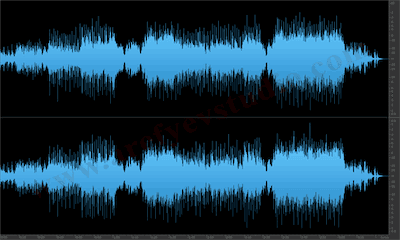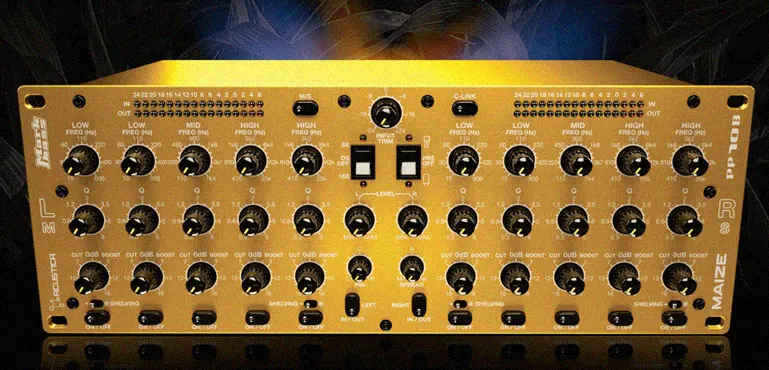In less than a week, the forum or Facebook group was not asked what mix level should be set for sending to mastering. Given the flow of various answers, the most common of these are suggestions for lowering the volume to -6 or -3dB to avoid peak peaks.
For the most part, only two small steps are necessary:
- Do not allow peak levels to reach 0db at the output;
- Do not use limiters or other similar plugins that compress material
The early days of digital audio
We are convinced that the assumption that you need to set the balance to -3 or -6dB refers to the early days of digital sound when the mixes were recorded on a DAT (digital audio cassette) or on a two-channel recorder (for example, Alesis MasterLink). These devices were very primitive and didn’t sound good when input levels were cut off. The assumption of peaks not higher than -6dB was a reliable and general recommendation for a good reason at the time.
The mastering engineer really doesn’t care if the peak levels of the mixed track reach 0db in a 24-bit file. As soon as peaks begin to protrude beyond the zero level and become cut off – this is damage that cannot be undone. One lost peak is not the end of the world. But when this happens throughout the song (for example, on drums or vocals), it can become a problem, even if at first glance it sounds acceptable.
— See also: Where is it more profitable to sell your music? Compare CDBaby and Tunecore —
If you are building a mix from an analog source, keep in mind the analog-to-digital converters, which have built-in processing that affects the overall volume.

This is an example of how a well-mixed pop / rock track before mastering looks like. Beautiful dynamics and ample headroom. Peak levels do not matter.
Understanding “In The Box”
Humanity has reached a point where most of the mixes that are released today are 100% boxed. This means that the sound is fully processed in the DAW program and is not recorded from an analog stereo source, such as a mixing console or summing.
What should be avoided with digital mixing is the sending of mastering mixes that take the form of maximum limits applied on the master channel. It can be anything: from the limiter and maximizer to the compressor and any other plug-in affecting the dynamic range.
We cannot say the exact number of attempts to inform the client about these details in advance, but this does not solve the problem itself. To distinguish between the importance of mixing and mastering processes, it is necessary to separate them as two different types of processing.

This is an example of information that is partially compressed inside a DAW program and was saved in WAVE 16 / 24bit. The damage was done and such mixes are sent for re-preservation (during operation, artifacts may occur affecting the overall sound).
We had clients who refused to prepare the material in the proper form and did not take into account the peak cuts of 5dB or more, thinking that this would not affect the sound (or they simply neglect their creativity). Damage cannot be fixed. It’s like compressing an audio file to mp3 and then trying to compress it back to Wave (the sound will not change. There will be the same noisy mp3 file, only in Wave format).

Although this mix is not technically clipped and peak levels are -6 dB, the mix has clearly distorted the peak limiter.
Law of averages
Besides peak levels, it is potentially important to watch (and listen!) What the average volume of the file is. Usually it is measured in the so-called “RMS” (Root Mean Square), but now it is more often measured in “LUFS” (volume units relative to the full scale). RMS and LUFS are somewhat similar in concept, but LUFS factors for certain frequencies are more (or less) sensitive to the human ear, so LUFS readings are more consistent with the human ear than RMS.
There are three main ways to measure LUFS. Integrated LUFS measurements capture an entire song or piece from start to finish, and are often performed offline. Short-term LUFS measures average volume, but is built on three-second timing, so you should carefully monitor the dynamics. Momentary LUFS is a very fast measurement, which is somewhat explainable in name, because it displays the volume in real time as a song or material plays. During playback, the values change very quickly.
— See also: 6 best plug-ins for fixing phase problems —
The beauty of most modern DAWs is that they allow you to save a track in Wave format 32-bit with a floating point (Float), and some even allow you to render in 64-bit. This makes it possible to obtain a file with peak values above 0dB, without cutting them (they will protrude, but this will not affect the sound itself). A mastering engineer can effectively eliminate this and fully perform his work. This is a bit like magic. What looks like a brick wall in 24-bit form suddenly looks (and sounds) like a useful mix in 32-bit (or 64-bit) floating point.
Recorded Depth vs. Actual Depth
Another important detail to consider is the confusion between the recorded depth and the processing depth performed by your DAW program and plugins. You can write something in 24bit, but the project will be set to 16bit (and all processing will be applied with the same depth).
There is a free plugin called “Bitter” from Stillwell Audio to help you show this. Put it on the main channel to see the actual depth of the audio stream.
Sending two mixed tracks
It has become common these days. Where in one version user mastering was done, and in the second – a correctly prepared mixed track. Such preparation of materials allows you to approximately find out what the client wants to hear in terms of volume, dynamics and tonal balance.
Everything that hangs on the stereo bus of the mix and does not affect the volume (such as the equalizer, exciter, etc.), which are necessary for sound, must be active for both versions. If you doubt that this works correctly, it is better to disable them.
Looking for a mastering studio? Send materials to us and feel how deep and life they will fill!



